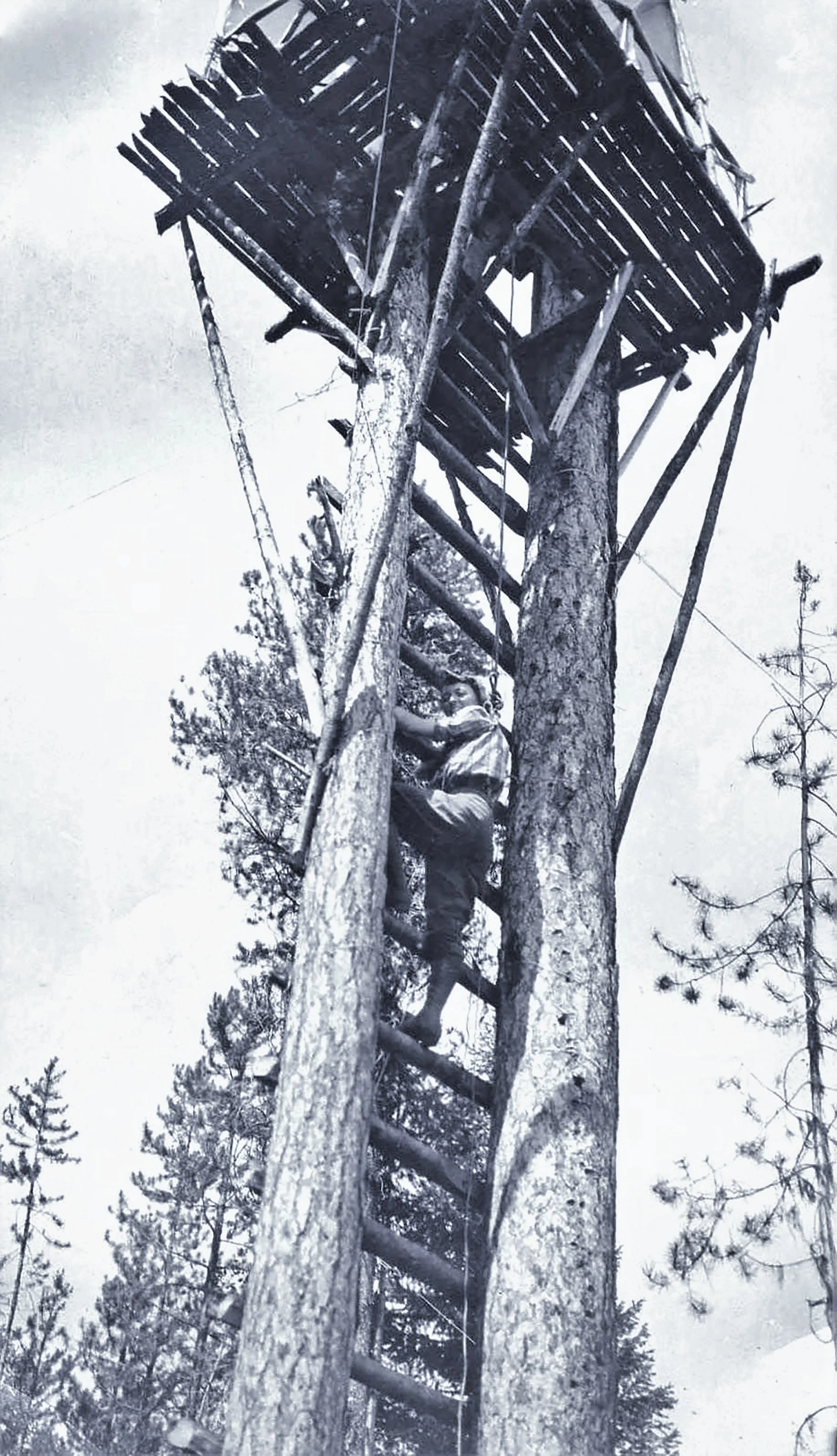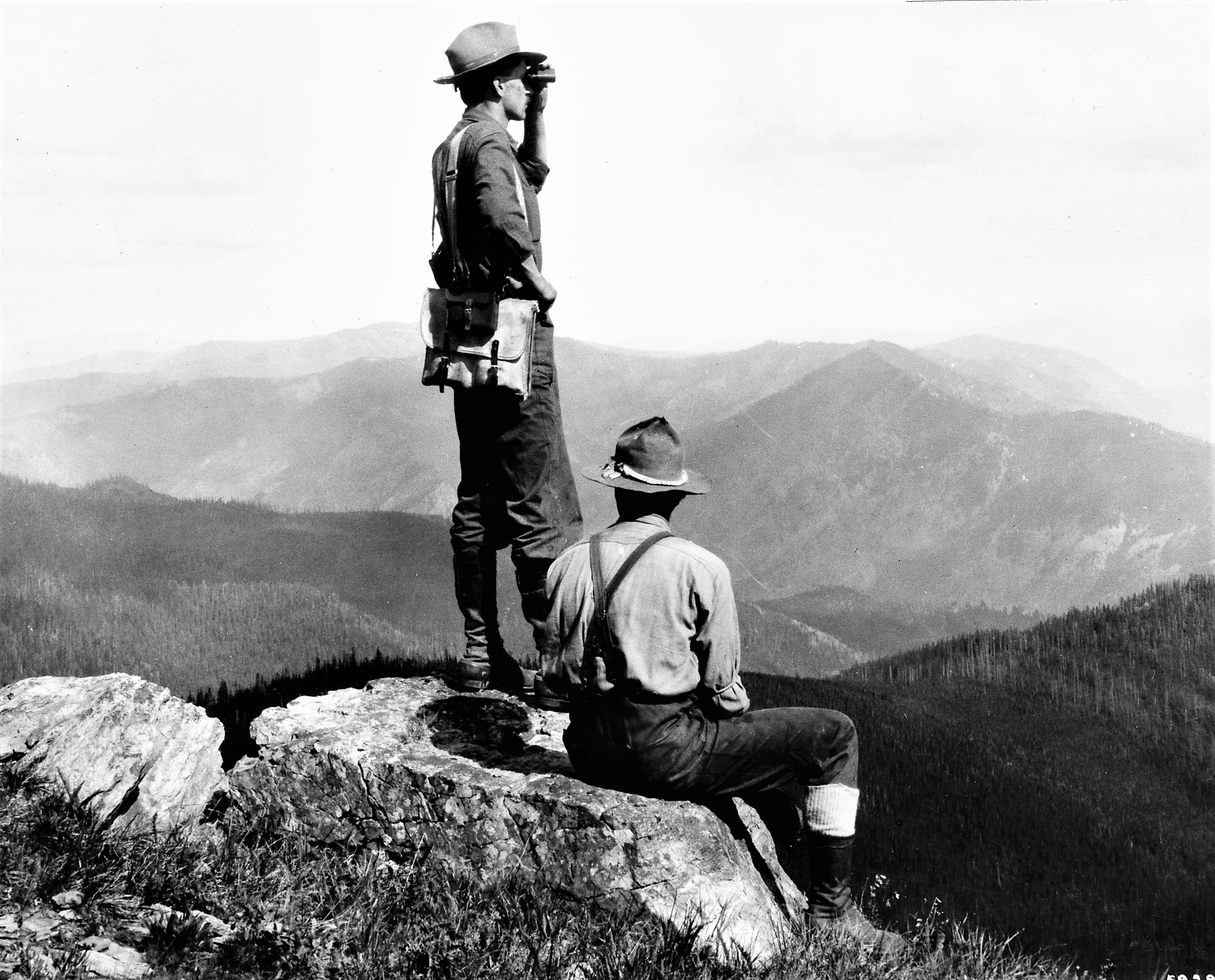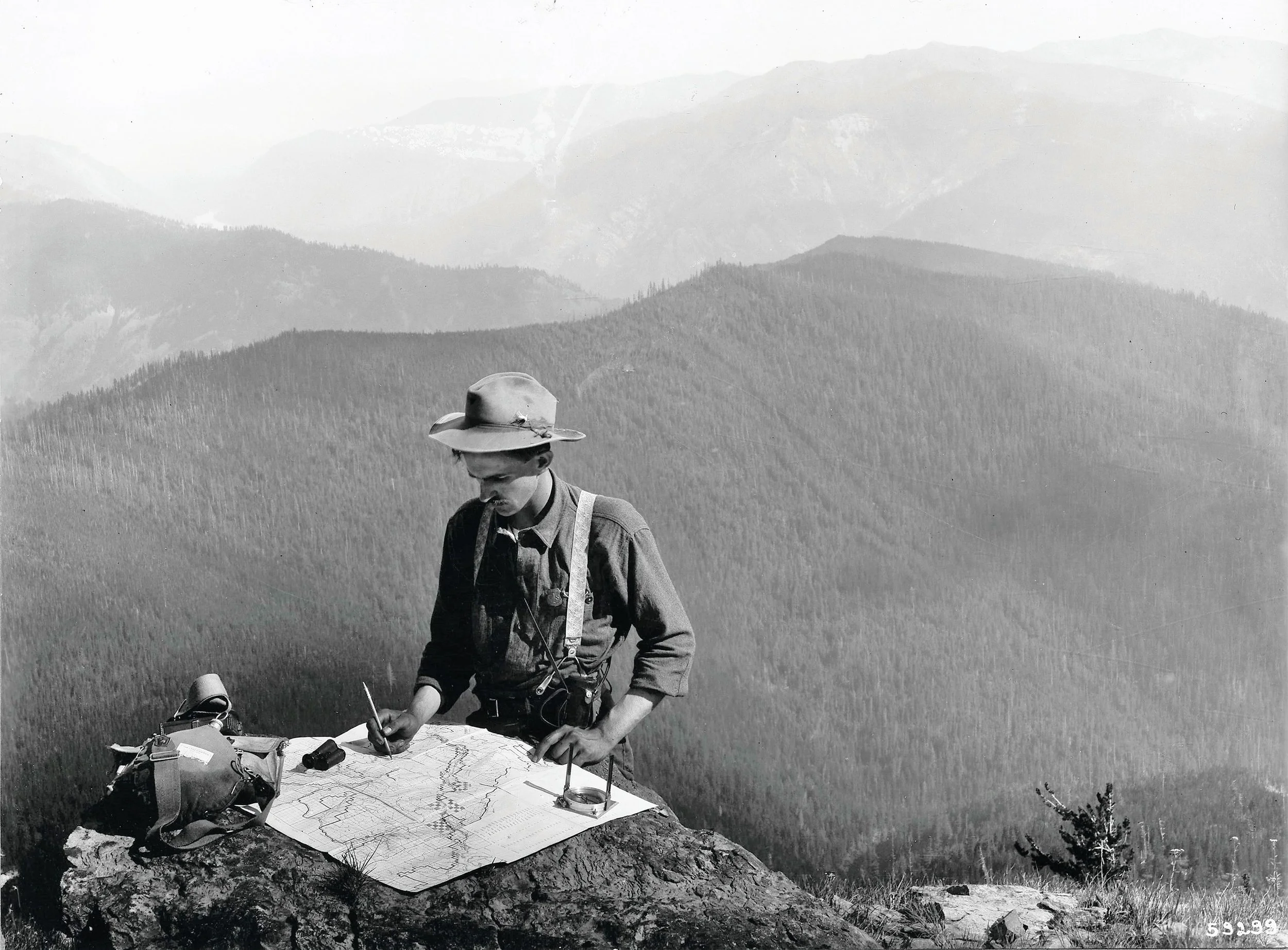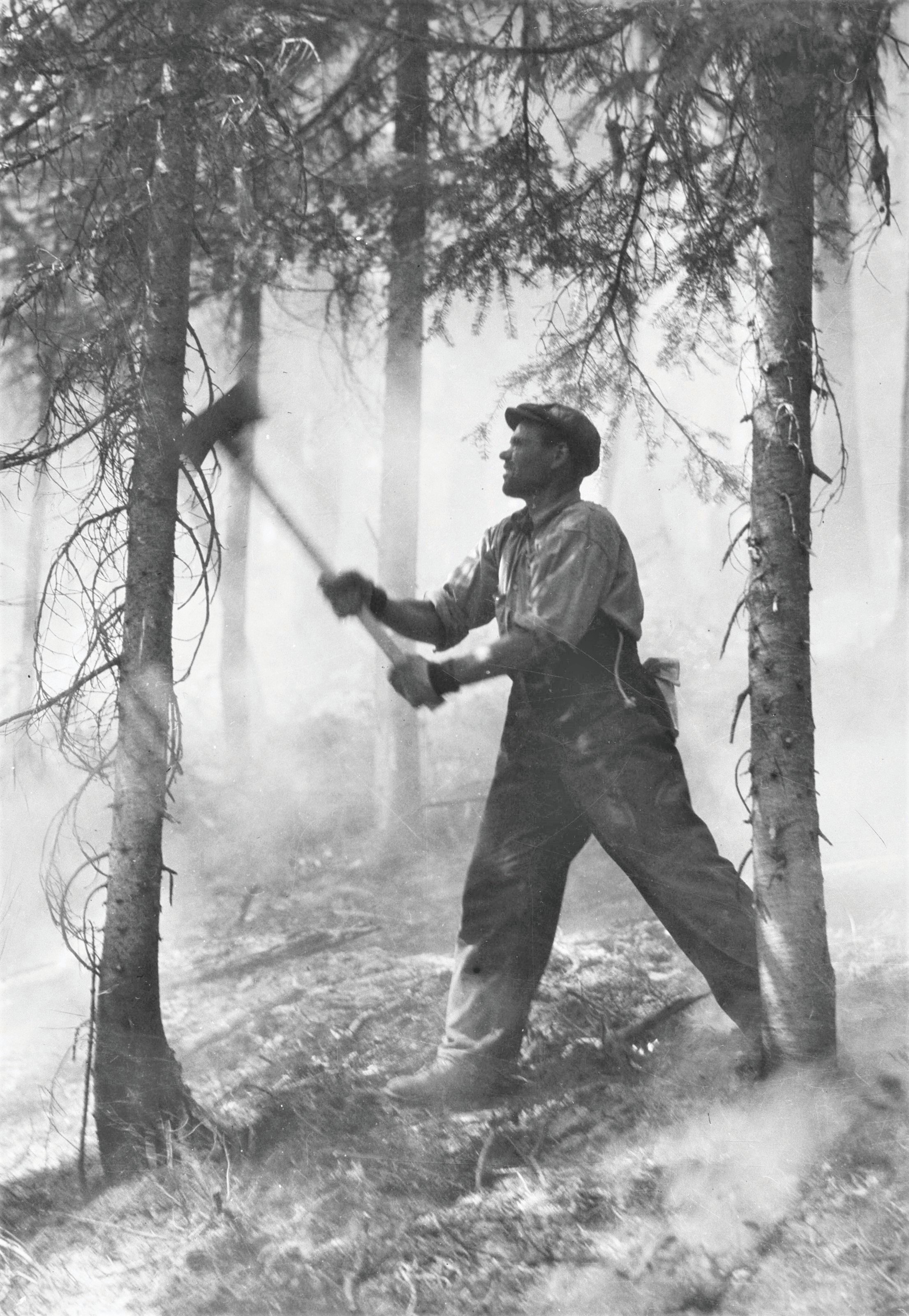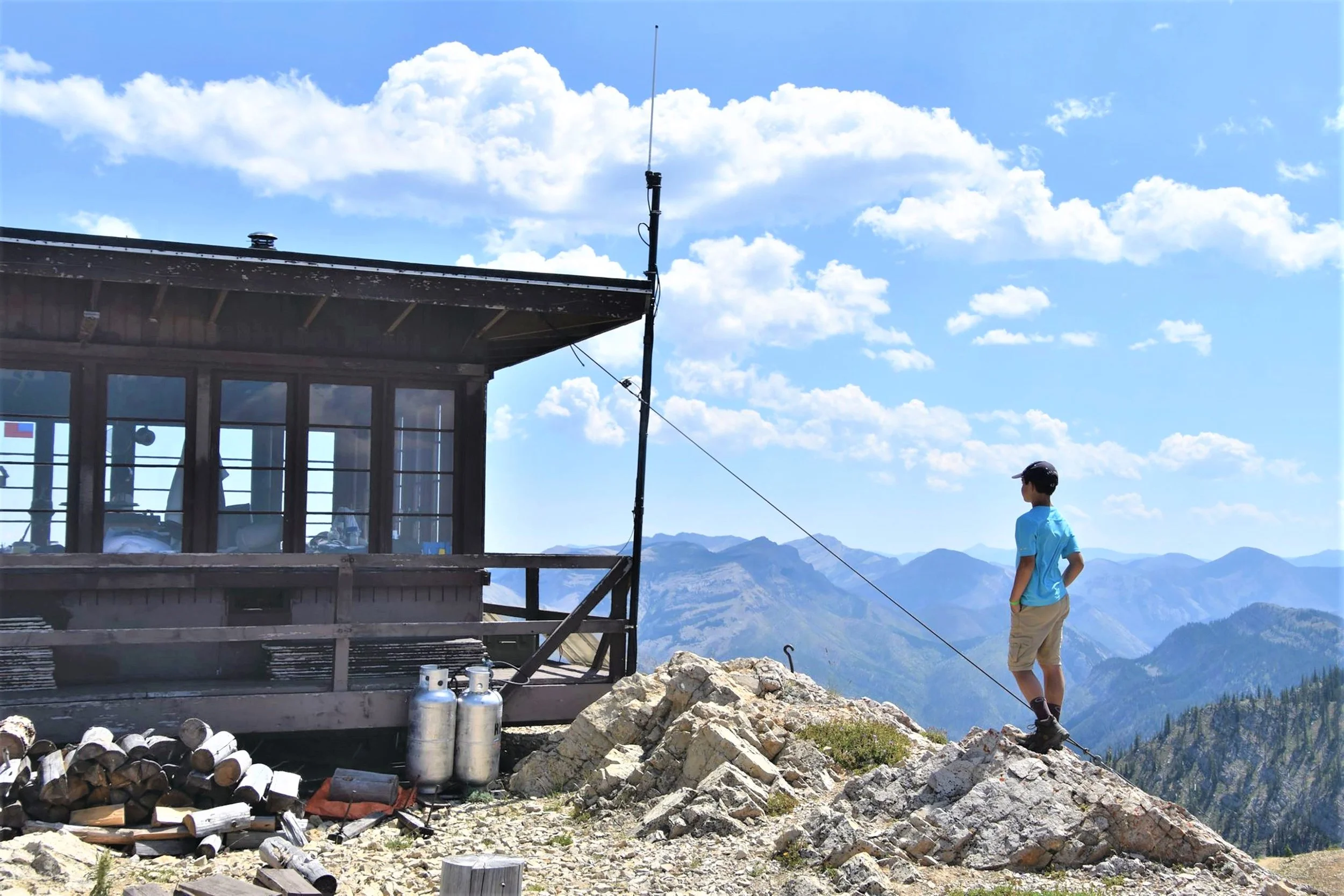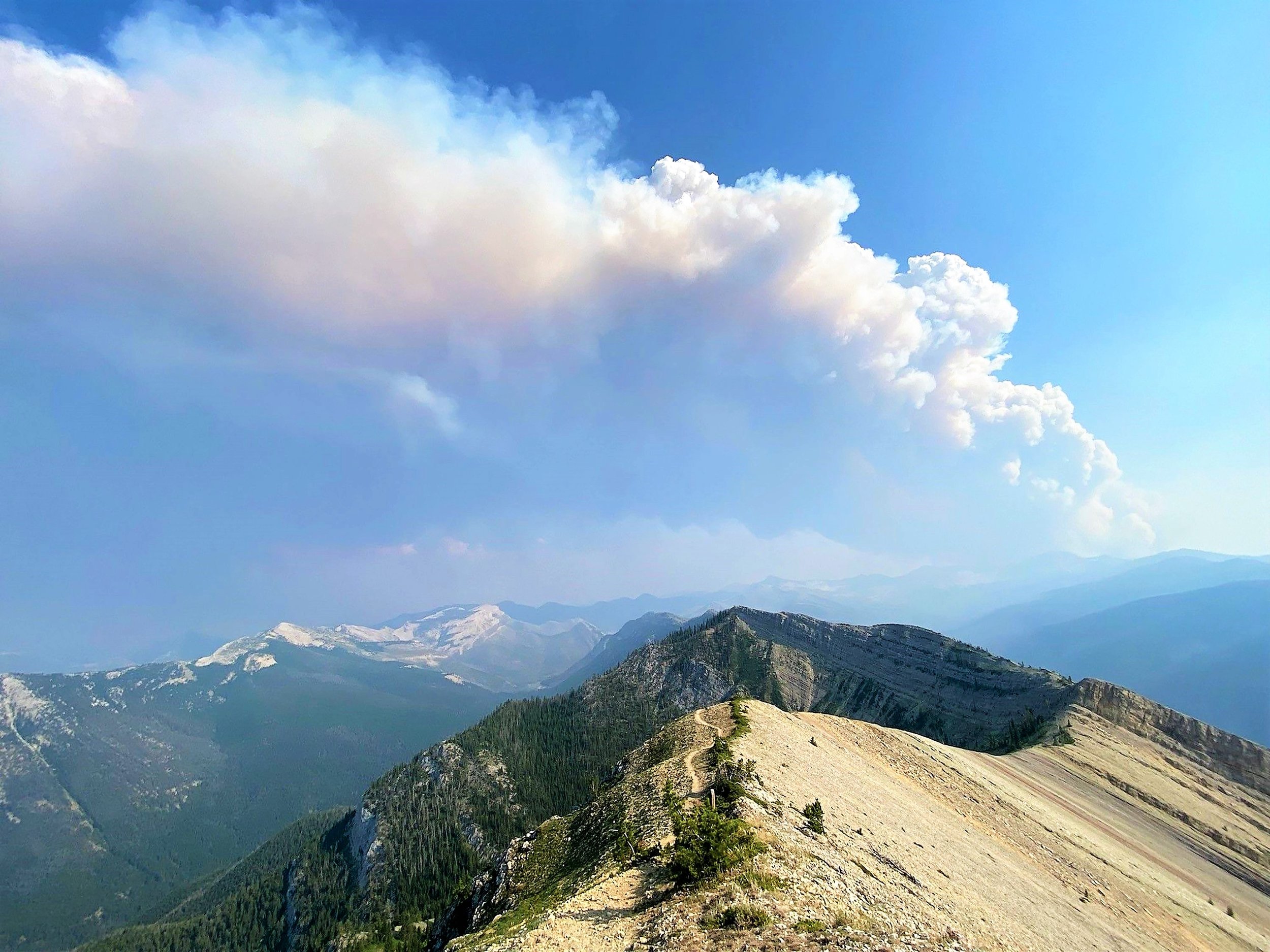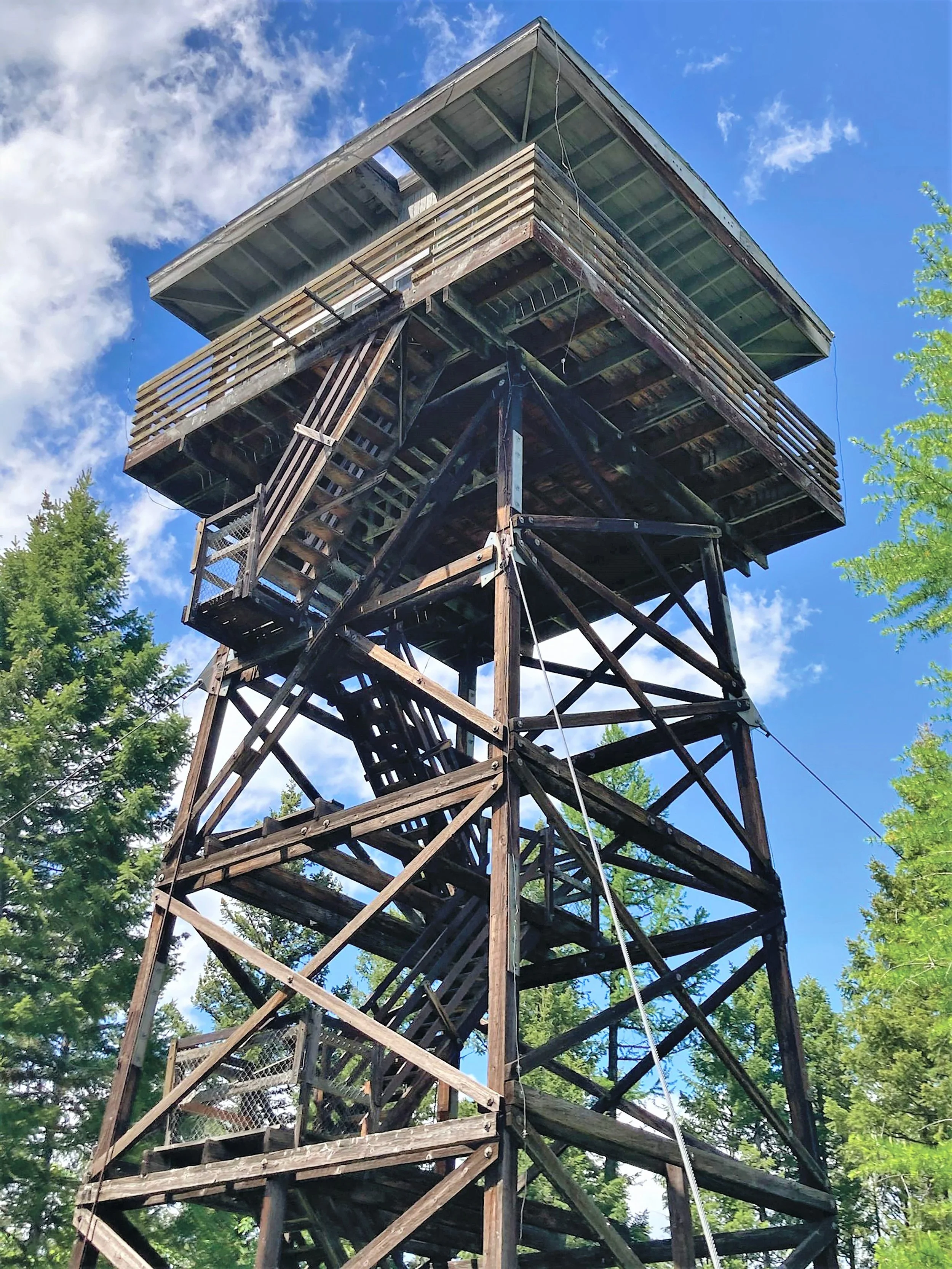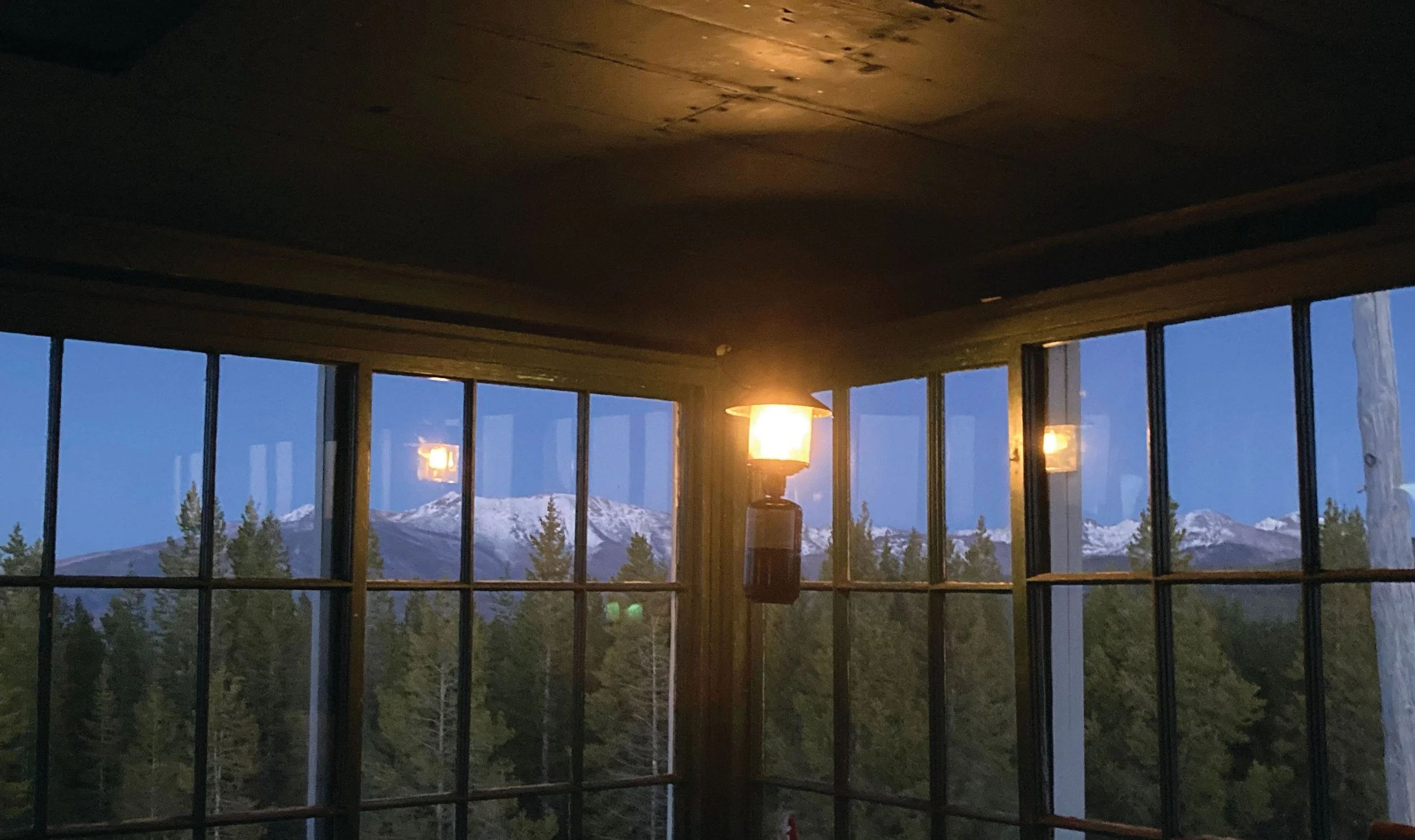The View from a Lookout Tower
Written and Photographed by Amy Grisak
Across Montana
“You have got to be kidding,” my friend said hoping, as we rounded the corner, that the trail was ending and realizing that it continued.
A four-mile hike with a 3,100-foot elevation gain to Scalplock Lookout in Glacier National Park can be one of endurance and maybe even some pain, but it is one of beauty.
Standing in the shadow of the lookout, the breeze brought a chill to our sweat-covered skin. The views of the Great Bear Wilderness to the east and St. Nicholas Peak offered a well-earned breather for both tired hikers. Although visited less frequently, the southern region of Glacier, stretching toward Two Medicine Valley, offers unlimited hiking opportunities and the views are ever changing.
The Paola Ridge Fire, which burned in 2018, altered the landscape and serves as a stark reminder as to why the fire lookouts exist. Fire has always been an integral component of the Western ecosystem, but the 1910 season issued a harsh wake-up call for logging communities and the newly formed Forest Service.
After three consecutive years of drought, 1910’s fire season began with early snowmelt and warm conditions amplifying the dry cycle. The first known fire sparked in late April on the Blackfoot Reservation and the newly minted forest rangers, along with U.S. Army troops, did their best to stay on top of the blazes, often sparked by railroads and bustling loggers, but on August 20, hurricane force winds blew the forest into a searing hellscape. Flames hundreds of feet high devoured everything in their path and within 36 hours, over 5,000 acres burned, decimating many small towns in its pathway.
With a devastating loss of over 3,000,000 acres of timber and 85 lives, the federal agency recognized the need for a strategy to spot fires before they grew out of control and fire lookouts became their eyes on the forest. Initially, platforms latched to treetops in strategic areas sufficed, but it took a strong stomach to climb the rustic ladder rungs tacked onto the tree trunks to sit on the platform looking for smoke.
Understanding their importance in spotting a hot spot before embers burst into flames, construction of lookouts continued until Montana reached roughly 639 lookouts at its peak in the 1930s. When smoke was spotted, the Forest Service sent men bushwhacking for miles through the forest to locate and snuff out the flames. The “10 a.m. policy,” which aimed to extinguish any flames by 10 the morning after smoke was initially spotted, became the agency’s goal for decades.
After WWII, aircraft became a more efficient means of fire detection and one by one, the lookouts were either purposely burned, demolished, or left to rot. Today, there are closer to 130 lookouts remaining in the state, with approximately 40 staffed by employees or volunteers, and 26 in a rental program. Even with modern technology, lookout staff still prove valuable in protecting the forests. Scanning the landscape hour after hour, day after day, builds a familiarity and sharp eye trained to detect a smoldering tree perhaps even before a satellite picks up a puff of smoke.
Beyond their primary function as fire spotters, lookouts serve as forest ambassadors with keen knowledge of the mountain ranges and history of the regions, along with information on the birds, flowers, and wildlife that keep them company throughout the season.
Samsara Duffey, who has staffed the Patrol Mountain Lookout outside of Augusta for a quarter of a century, fondly points to surrounding mountain ranges and describes them to visitors who find their way to her post. On her time off, Samsara hikes the nearby trails, usually making a multi-day trek exploring her summer home and visitors walk back down the mountain having learned much about the area from her shared experiences.
While visiting the Porphyry Lookout in the Little Belt Mountains of central Montana, expect the staff person to share a lesson on the function of the Osborne Fire Finder. Developed in 1911 by William Bushnell “Bush” Osborne, the disc features a topographic map of the region, along with a sighting mechanism which allows the lookout to accurately pinpoint the location of distant smoke. Even with the availability of modern technology, lookouts still know how to use the Osborne Fire Finder, and many are happy to teach visitors this simple, but effective, means of describing a fire’s location.
While hiking to a lookout makes for an exceptional day trip, rental lookouts allow visitors to camp out in the unique mountaintop perches. Montana is home to more lookout rentals than any other state and availability can be found by visiting recreation.gov. Most rentals are accessible via roads, but the notoriously narrow and winding logging trails may require four-wheel-drive to reach the destination. With the right vehicle and perhaps a chain saw in case of downed trees in the road, visitors can drive nearly to the door of many of the rentals.
The lookout rentals are typically equipped with a wood stove, and some even have a propane cook stove. Because the lookouts are situated in the high country, there’s typically no running water, so visitors are advised to pack in their needs, including a sleep system and cooking supplies. Although self-sufficiency is key, rental lookouts provide a comfortable way to camp and the views are beyond description.
Whether they’re the goal of a day’s hike or an overnight camp, lookouts provide much more than recreational opportunities. These sentinels of the forest have watched over the landscape for decades, if not beyond a century, and still offer visitors a chance to take in amazing views and a better understanding of the beautiful land surrounding them.

